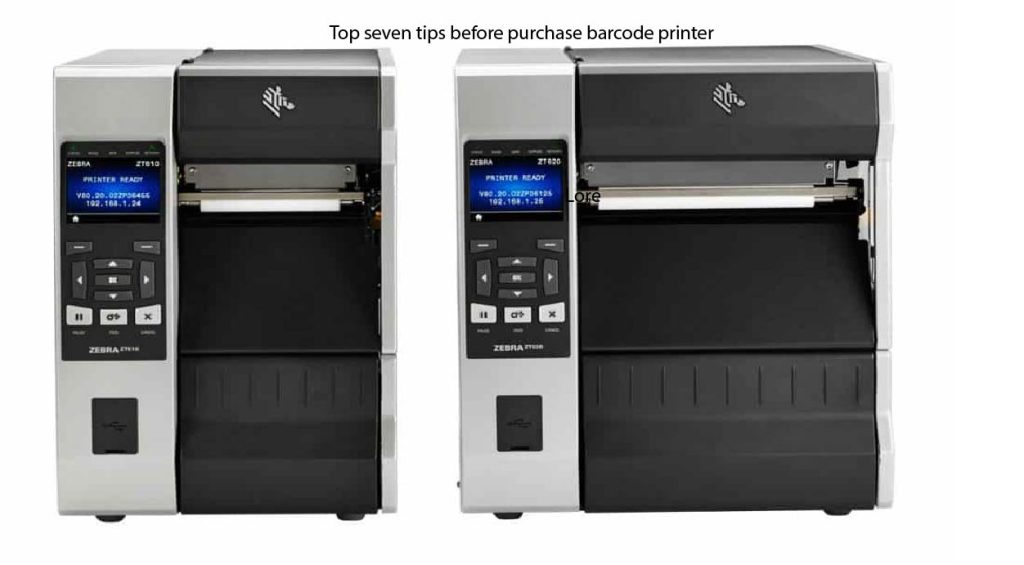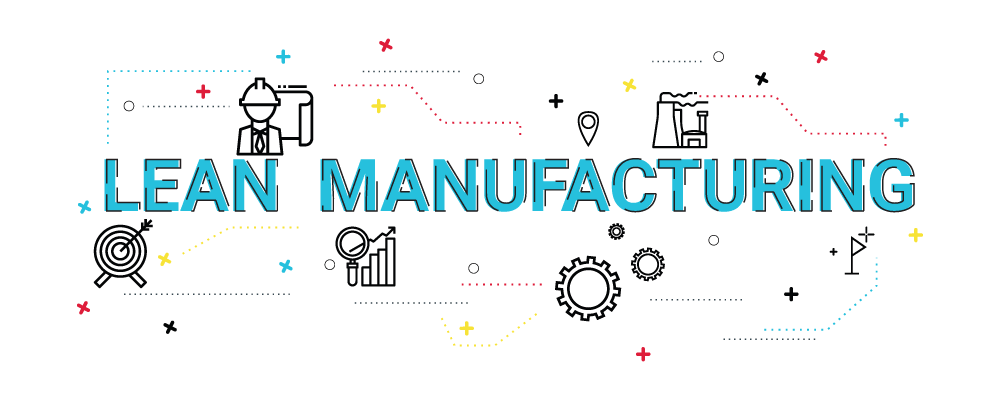
Top seven tips before purchase barcode printer
Introduction:
Lean manufacturing is a disciplined approach to continuous improvement by identifying and eliminating waste. Lean manufacturing is a disciplined approach to continuous improvement by identifying and eliminating waste.
Lean manufacturing emphasizes simple, small, and continuous improvements rather than large changes. Lean manufacturing is never-ending, continuous improvement.
Its main advantages are reducing production costs, increasing production volume, reducing production time, and adapting to change.
History of Lean Manufacturing:
1894: Sakichi Toyoda, with his own skills, invented a more efficient loom than the traditional loom.
1918: Sakichi started the ‘Toyota Spinning and Weaving Company. Later he was awarded the title of Japan’s King of Investor.
1926: Sakichi Toyoda begins weaving with automatic machines.
1929: Sakichi’s patent for a fault-correcting loom (the machine stops when the thread breaks) is sold in England by his son Kiichiro Toyoda for $500,000.
1933: Toyota established the Automobile Department to improve the business and began experimental production of automobiles.
1937: Company name changed to Toyota Motor Company.
The 1950s: As the demand for customizes increased from the beginning of this decade, production decreased, resulting in higher prices.
1950-1956: General idea is, that selling price = cost + profit. But Toyoda thought that if costs could be reduced, the same profit could be made by selling lower-priced products. So he focused all his thoughts on reducing costs ie waste. Profit = Selling Price – Cost.
The 1980s: Many companies in Europe, and America, were closing in on Toyota and starting to lose market share. During this time, Toyota’s Just in Time (JIT) manufacturing gained popularity, discarding the old batch method to survive in the market.
1990 The term Lean Manufacturing was first used in the book ÒThe Machine That Changed The WorldÓ by James Oreck.
All the Tool & Techniques applied by Taiichi Ohno in Toyota’s production system are known as Toyota Production System. Later it came to be known as Lean Manufacturing.
Taiichi Ohno is called the father of Lean Manufacturing.
Currently, 290,000 people work at 52 Toyota plants in 27 countries.
Never surrender to the never-ending waste.
Value & Waste :
Value – In lean manufacturing, the value of a product or service is determined from the perspective of the customer. How hard work is done or what technology is used does not matter to the buyer. The buyer’s consideration is how well the product or service fulfills his needs.
The buyer is not reimbursed for the cost of fixing quality defects on the line, or for additional factory overheads. Based on the satisfaction of their needs, they pay the price of the product.
The buyer is not reimbursed for the cost of fixing quality defects on the line, or for additional factory overheads. Based on the satisfaction of their needs, they pay the price of the product.
In lean manufacturing, the value of the product is determined based on what the customer wants. The work related to production can be divided into three categories.
Value-added work: Only those works or information that turn raw materials into products according to the customer’s needs. That is those activities that increase the value of the product.
Non-value-added work: All work or information that does not increase the value of the product only increases the cost. Any work that does not add value is a waste. Another way of understanding waste is that the customer does not pay value for the item or work. Quality checks are also considered wasteful because the customer does not pay any extra for quality checks. If we can produce error-free/defect-free production by improving the production process, then quality checks will not be necessary.
Nonvalue added but necessary: All the work or information that does not increase the value of the product but is essential for the production of the product. All these works may or may not be eliminated in the long run through improvements. For example Safe stock (Buffer Stock).
8 wastages:
1. Over Production: Overproduction is unnecessarily producing more than the demand or at a faster pace than needed or before the need.
At Toyota, overproduction is considered a key waste, as it is the root cause of other waste. Producing more than customer demand at any stage of the production process will create inventory. Excess inventory will slow down shipments, preventing continuous improvement and troubleshooting.
2. Excess Inventory: Inventory wastage refers to unnecessary large amounts of raw materials (WIP), and finished goods. Excess inventory increases costs. Excess raw materials (WIP) and finished goods lead to long lead times, and spoiling products. Transportation increases inventory costs and delays. Excess inventory hides production inconsistencies, late deliveries, equipment breakdowns, and long setup times.
3. Defects (Rework/Defects): Problems are caused by manufacturing defective products, re-processing, making unusable items, wrong information or late delivery, etc. It is a waste because reprocessing takes twice as long to produce the product.
4. Unnecessary Transportation: Any type of transportation of materials that do not add any value, such as: transporting WIP too far, making improper transportation, or moving objects, parts, or complete items from the warehouse to or from outside during work. to go
The transportation distance of material between different stages of production should be short and the output of one process should be close to the input of another process. Too much transportation between process steps leads to inefficient utilization of labor and space and causes small disruptions in production.
5. Over-processing: Adopting unnecessary steps in processing, inefficient processing due to bad equipment, inefficient product design (Product design), and more quality than required (quality) production of such waste is also created. Not only does this result in inefficient use of labor and machinery, but the additional processing involved increases management time and factory overhead costs.
6. Waiting: Waiting is the idle time of workers or machines either for the next work step, machinery parts, or due to stock-outs, lot delays, machine breakdowns, and capacity bottlenecks. ) due to this, if the factory does not produce properly. A slight delay between the two units is also included in the wait. The cost of waiting for increases greatly.
7. Unnecessary Motion (Movement): Unnecessary movement includes unnecessary physical movement or walking that takes them away from the actual processing task. Example – Any machine operator’s working time consists of two parts, one is handling motion time, and the other is machining/swing time (sewing time). Typically 70 to 80% of total work is done during handling motions. If the operator’s handling motion is not correct or there is any unnecessary motion, it takes more time to complete the work; As a result, its capacity decreases. Even walking is a waste.
8. Unused employee creativity: Not involving employees’ intelligence, skills, improvement, and various tasks, not giving opportunities to learn, and not listening to employees’ ideas.
Steps in Lean Manufacturing Implementation:
The foundation of lean manufacturing is the identification and elimination of waste. Steps in Lean Manufacturing Implementation
They are:
1. Realizing the fact that there are avoidable wastes in factories.
2. Through waste analysis, find out the root causes of wastage.
3. Finding solutions to the root causes of wastage.
4. Achieving the goal by implementing the solutions obtained.
When these steps are completed, it is necessary to go back to the first step and apply the steps again in the cycle.
Tools of Lean Manufacturing
1. KAIZEN
Kaizen = Kai means change + Zen means good. Means change for the better, in other words, “continuous improvement”.
Definition: 1. Continuous improvement of an operation or procedure or system through small changes.
Definition: 2. Kaizen is one or more methods or means by which a specific goal is achieved.
Definition: 3. Corrective measures within various constraints.
Steps of Kaizen: 1. Eliminate > 2. Reduce (Reduce) > 3. Change
For example- 1. The elimination of the opening tuck operation before the side seam is an example of the first step of kaizen.
3. Zara-607 style frill joint is an example of a change to increase productivity by using a multi-needle chain stitch machine (MCM) instead of a single needle flatlock machine.
Exclude – Exclude helpers with Kitterman
Reduction – Number of laymen reduced from 10 to 8
Change – By using computer-printed bundle cards instead of manual bundle cards, the manpower required is four instead of seven. And the most important thing is, previously there was extra OT for bundle cards, now that won’t happen.
